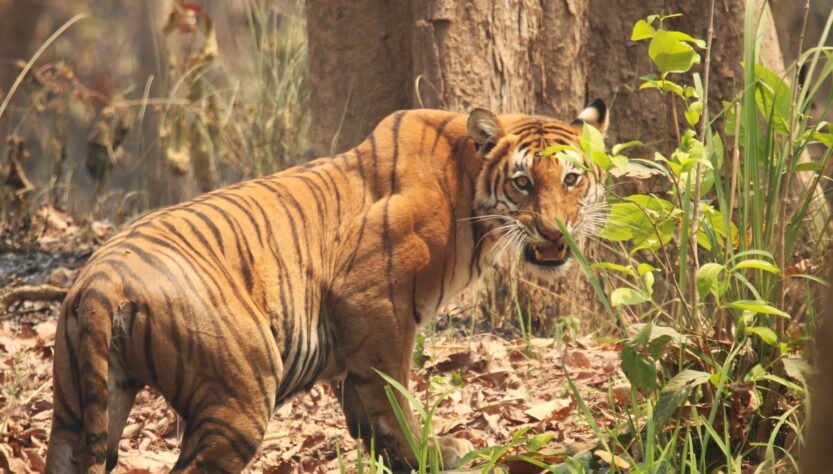Story by Steve Frankham
Photos by Sushila Mahatara, Manju Mahatara, and Steve Frankham
ONCE UPON A TIME IN THE JUNGLE
Shushila and Manju, two sisters, both expert wildlife guides, bent over, carefully examining a giant circular footprint, etched into the powdery grey earth of the forest track. It was a cool, slightly misty morning in the jungle of Nepal’s Bardia National Park. Bardia is a wildlife gem, harbouring the country’s largest population of tigers, and a wealth of other endangered species including sloth bears, Indian rhinos, Ganges River dolphins, and leopards.
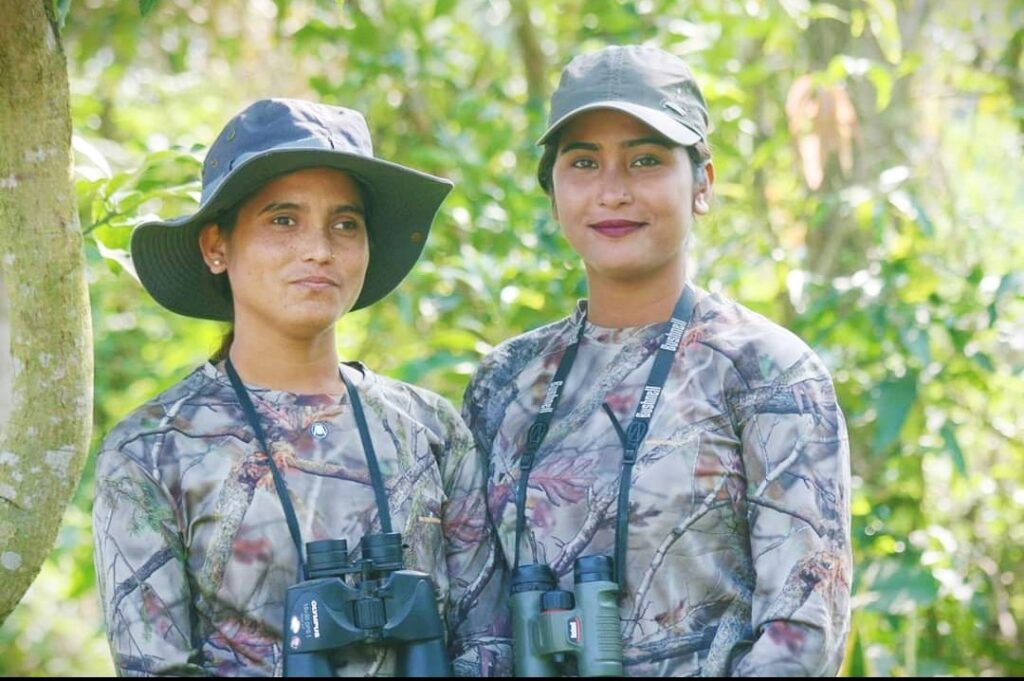
They studied the track, conferring in Nepali, before turning to me and an English family, who had come to Bardia a few days before.
‘This is from this morning…perhaps from the elephant that had been in the village last night.’ Shushila stated confidently. The night before had seen a bull elephant enter the village, looking for an easy meal in the form of crops. The elephant had destroyed a villager’s house – an unfortunate byproduct of humans and wildlife living so closely together. With human populations rising, the elephant’s natural habitat has shrunk, and incidents of elephants entering the village are not rare. Encounters between wild elephants and people can be tense, and sometimes dangerous, especially with the more aggressive males.
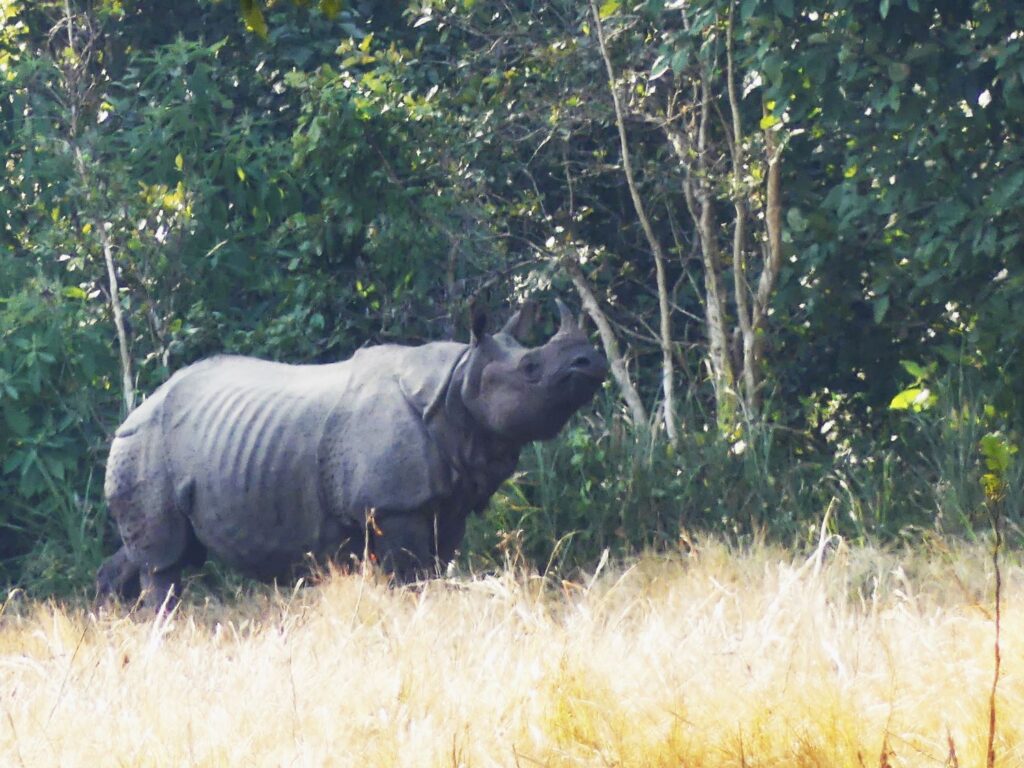
THE FEARLESS DUO
Despite this, Manju and Shushila didn’t flinch, didn’t hesitate. As well as being the natural habitat of elephants, rhinos, and tigers, the jungle of Bardia is also the natural habitat of Sushila and Manju, two utterly fearless ladies, attuned to the rhythms of the wild. One of the English family’s teenage boys scanned the forest nervously on either side of the path…a crash in the branches above him made him jump ‘Holy shit!’.
WHEREVER THE TRAIL MAY LEAD…
A black, curious, primate face stared down from the branches above. ‘Langur’ stated Shushila in her matter-of-fact manner. Its barked alarm sent the monkey family crashing and racing through the trees. With this, we set off on the trail of the elephant, through the forest, past stands of tall elephant grass, walking in the footsteps of a giant. As we walked, Shushila and Manju pointed out the tracks and signs of other wildlife…tigers, otters, and deer.
Walking in Bardia, you never know what you will encounter around the next bend in the trail – that’s the thrill of it! The thrill of the unknown – you live in the moment and for the moment. It is a magical experience.
IN THE COMPANY OF GIANTS
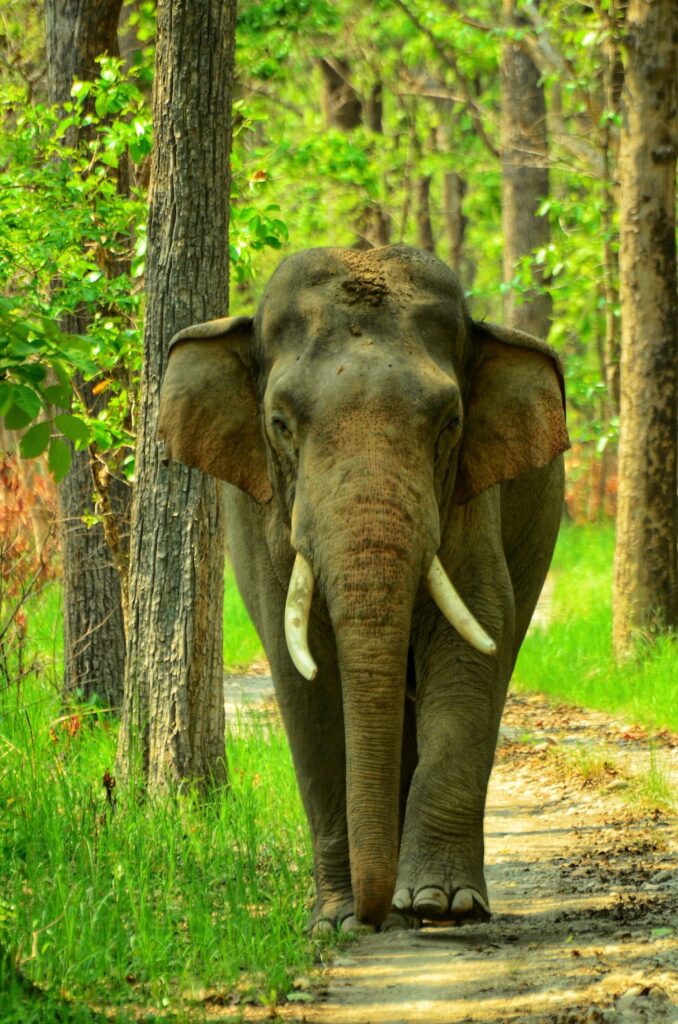
Approaching the dried-out riverbed of one of the branches of the Geruwa River, Manju stopped, carefully studying a low line of scrubby forest in front of us. ‘I think the elephant is in those trees.’ she whispered. How she knew this, I still don’t know…the forest was silent, and no movement could be seen in the vegetation up ahead.
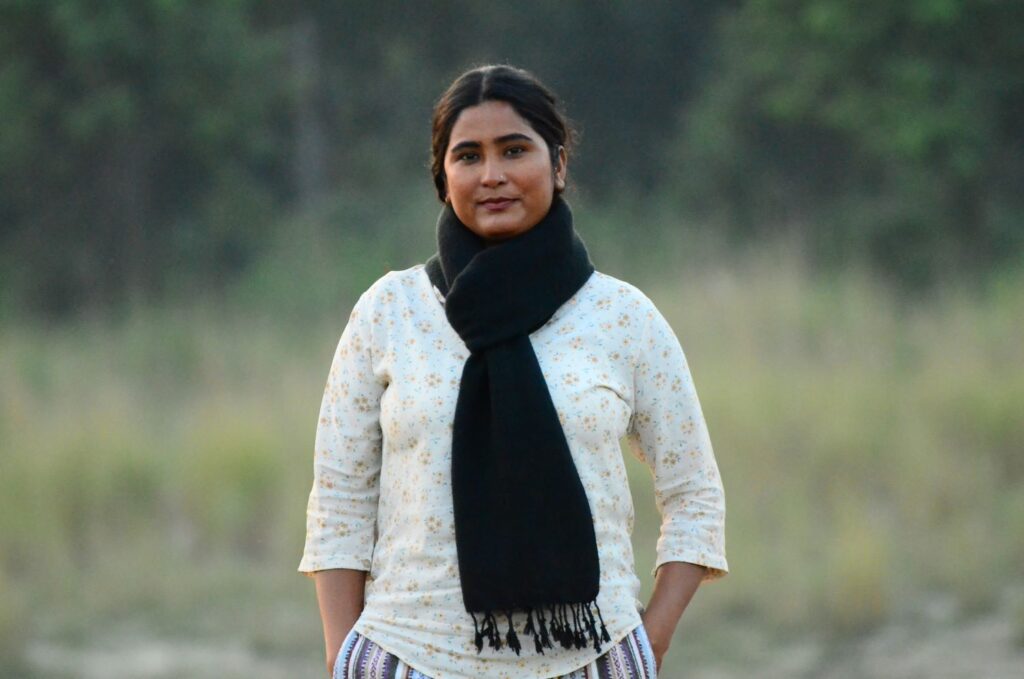
Manju is perhaps the quieter of the sisters, a strong, statuesque lady, who, just like her sister, acquires a laser focus when walking the forest. We circled quietly around the back of the trees, walking through elephant grass that in places rose above our heads. Taking the lead Manju found some higher ground and scanned the vegetation with her binoculars. Sure enough, the great grey back of an elephant loomed out of the forest, rising above the bush.
We watched, fascinated, as the huge beast grazed contentedly, the silence occasionally interrupted with a sharp crack as the elephant toppled a small tree or ripped off a particularly tasty branch. With lesser guides, we would have never witnessed this sight, but the sisters are pros of the highest order.
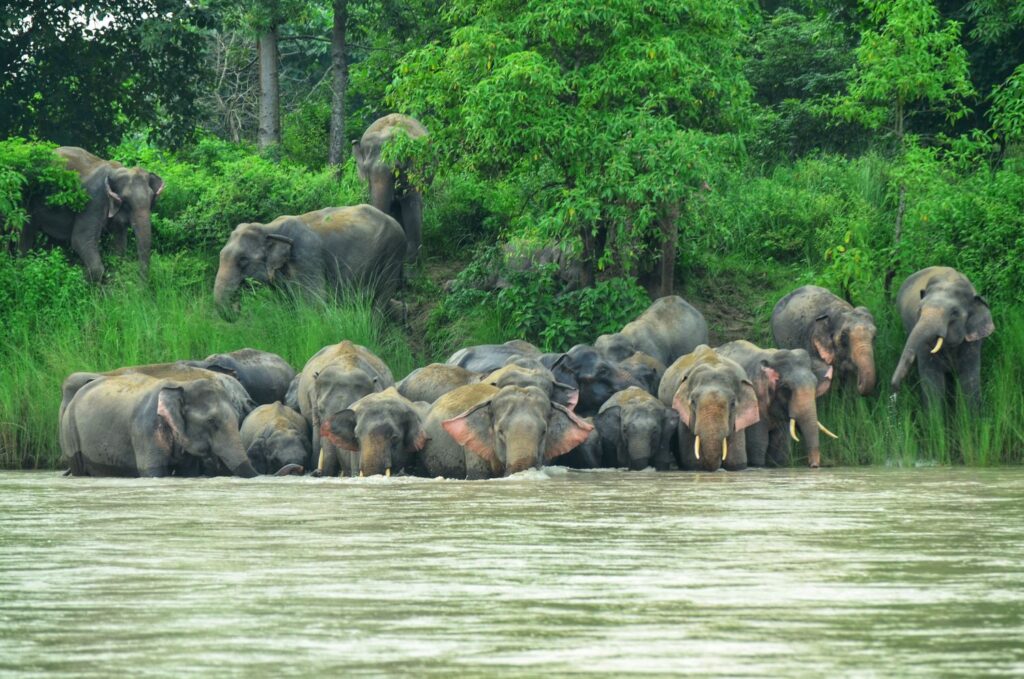
THE PIONEERS STORY
More impressive still, is that Sushila and Manju are achieving success in a line of work long dominated by men, not only in Nepal but in Southern Asia as a whole. Female role models in business here are the exception, rather than the rule. They are pioneers, rapidly gaining a formidable reputation based purely on their ability. Shushila and Manju were recently selected by the BBC as their primary trackers/guides for an upcoming documentary series on Asian wildlife. This was their reward for years of hard work honing and refining their skills. It wasn’t an easy journey.
EARLY INSPIRATION
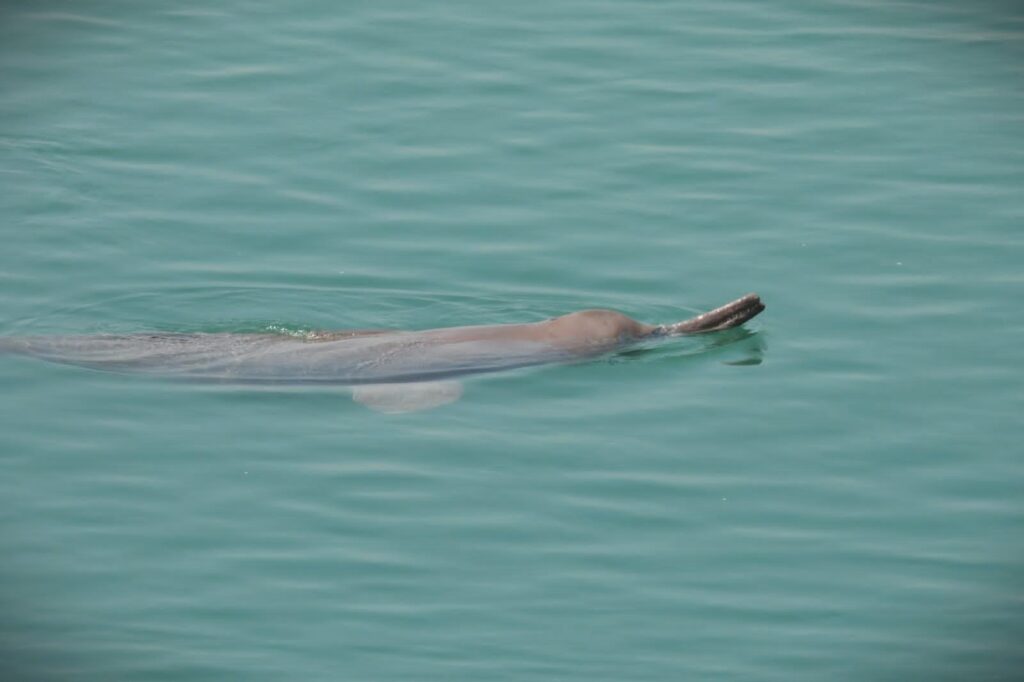
The sisters grew up near the river that borders the park, and their love of wildlife developed by watching the animals that frequented its banks. Their father also worked with the domesticated elephants (used for wildlife patrols in the park) at the breeding/rehabilitation centre close by. Their father gave them some of their first insights and inspiration into the natural world.
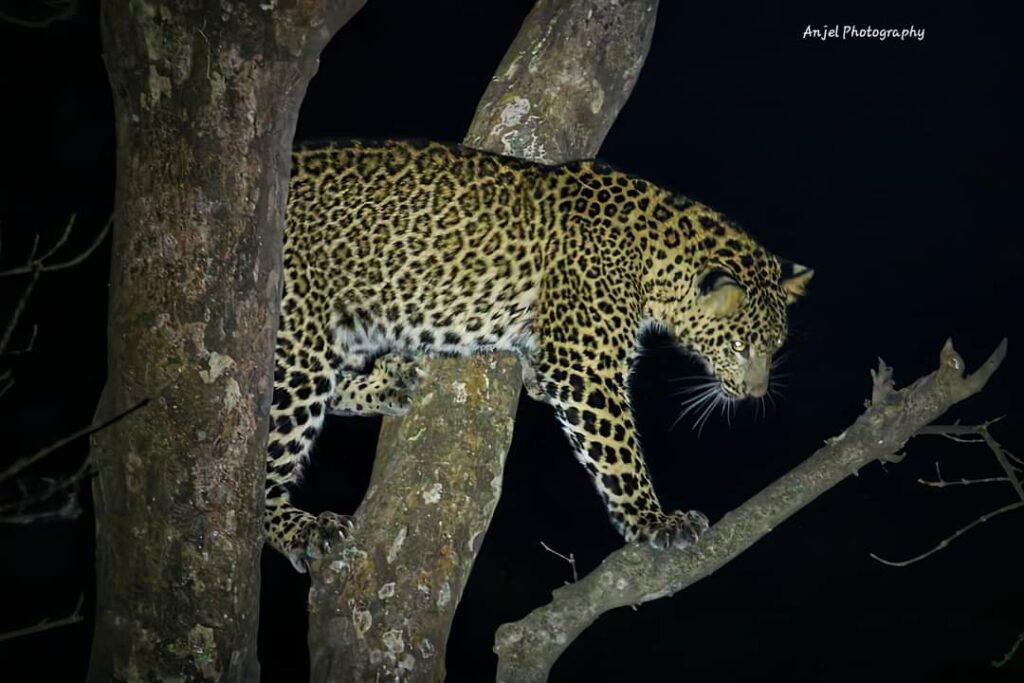
‘Elephants are my favourite animal. I remember I used to go down to the centre, play with and look after the baby elephants…It was magical!’ remembers Sushila, her voice still carrying the wonder of these early experiences. The girls also remember watching tourists coming to the park. They were curious about these foreigners from far-off lands.
A LONG AND DIFFICULT ROAD
It would be a long road for the girls to become tourist guides. Neither was taught English in the local school, and for many years Sushila and Manju had to work in hotels, in reception, cleaning, and, in Manju’s case, as a cook. This allowed them to practice their English, learn about tourism, and occasionally take trips to the park. Finally, starting with Sushila, the girls got the opportunity to complete their training as guides, but in a male-dominated society, the girls were often doubted.
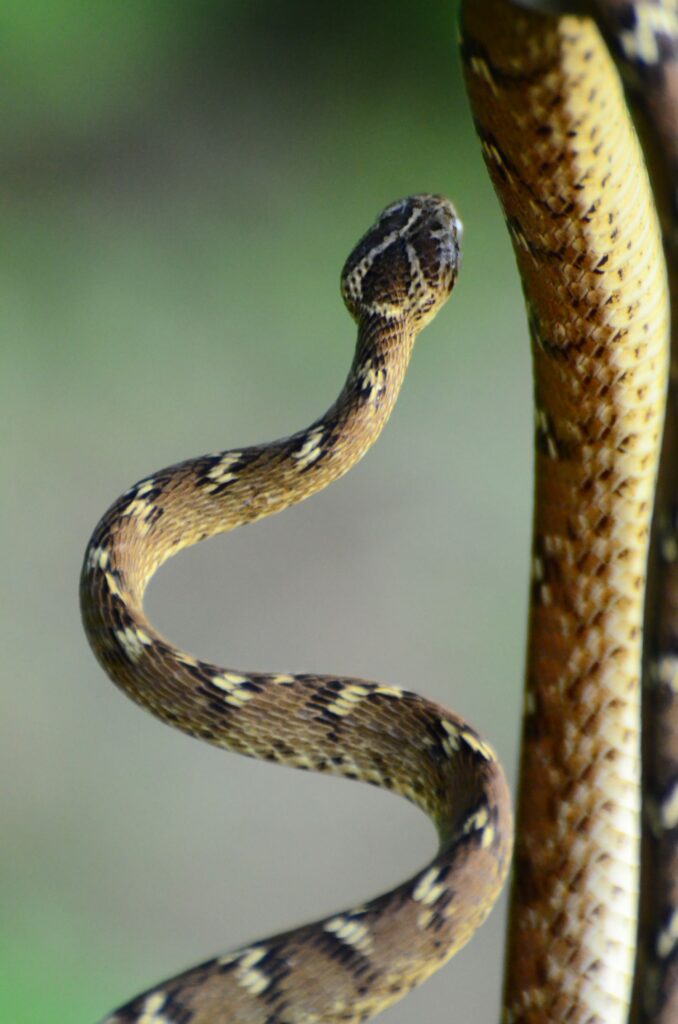
‘Many people didn’t trust us in the beginning. They said ‘These are girls…they’re not strong enough to keep clients safe!’ Of course, if you understand animal behaviour, and know what to do when you encounter an animal like a tiger or rhino on foot, that is what really keeps you (and the clients) safe!’ observes Sushila.
Another prejudice the girls had to overcome was the idea that a woman’s place in Nepal is in the home, in the kitchen, and not working in tourism.
Manju explained. “When I first took groups into the jungle, sometimes just men, people looked at me strangely. I could see people thinking ‘Why is a GIRL leading boys into the forest?’, but over time, as we began to get positive reviews and feedback, these attitudes have changed.’
Both Sushila and Manju hope to inspire a new wave of young girls who love nature and wish to pursue a career as the next generation of guides in Bardia and throughout Nepal. For my part, I can say that there are no better role models than Sushila and Manju.
SUSHILA
I first met Sushila on a project to promote and assist community conservation in the Bardia area. The project was sponsored by Burhan Wilderness Camps, who are pioneering and supporting many of these projects. They had also helped Sushila and Manju with getting their break with the BBC.
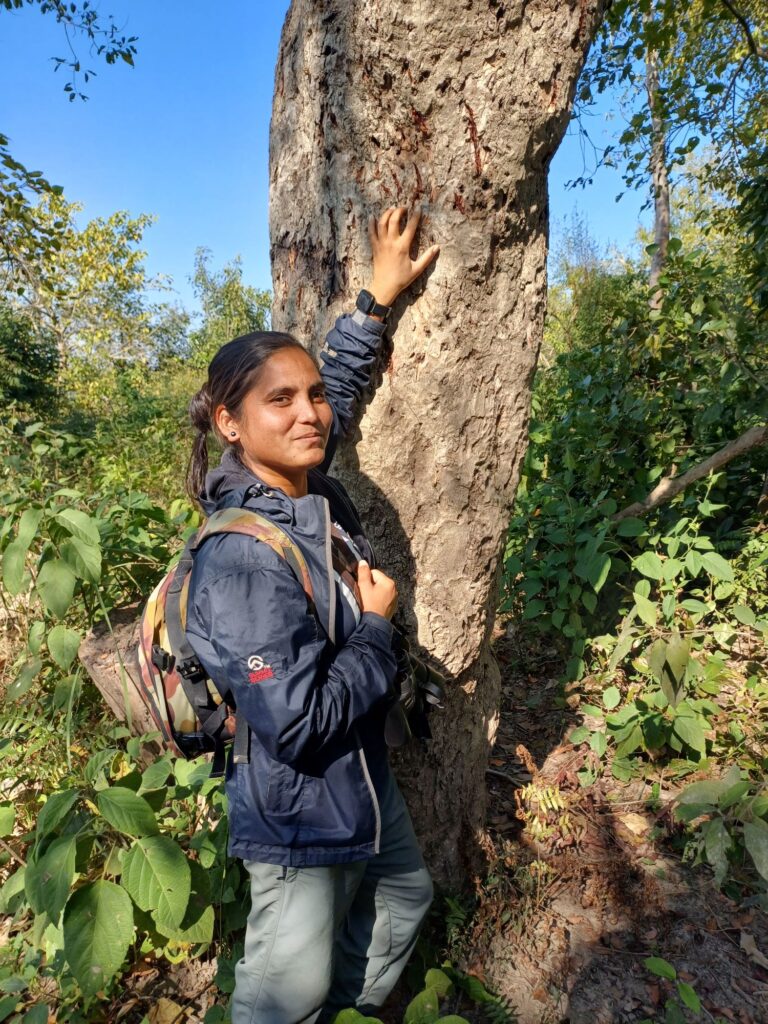
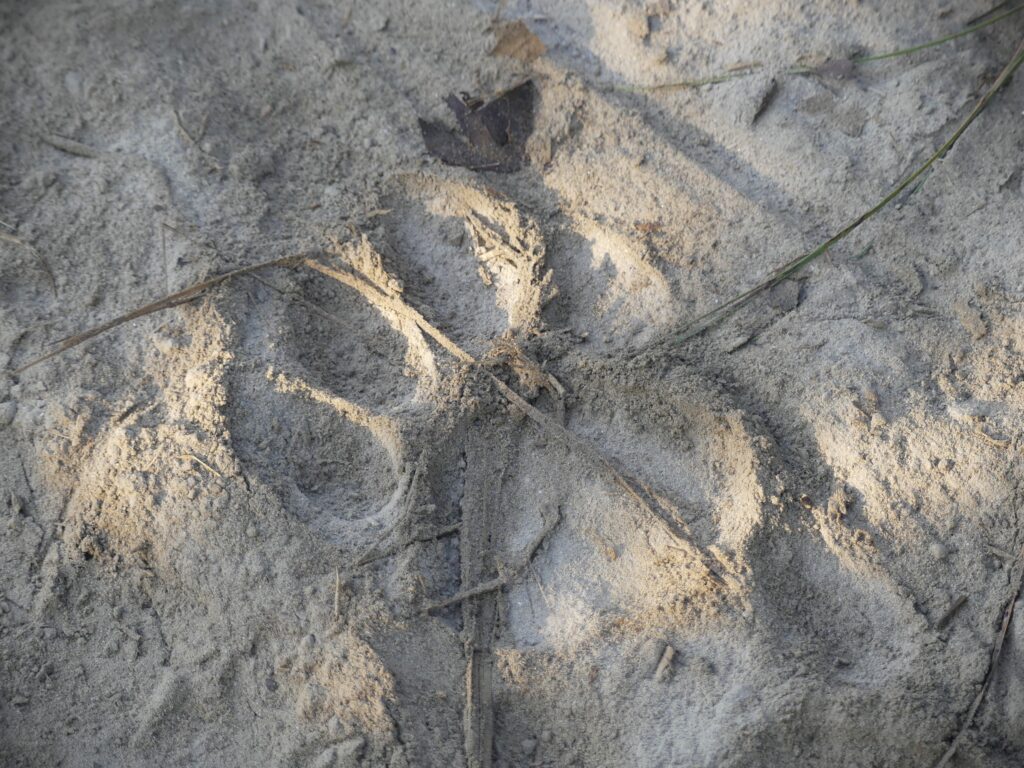
BACK TO SCHOOL MR STEVE
Sushila would always be at the camp just after sunrise with her friendly, easy-going manner, scanning the riverbanks for signs of life, and the trails and beaches for fresh footprints the night before. It wasn’t hard to find prints, as the island where Burhan Wilderness Camp is located is a wildlife hotspot. We would regularly find tiger tracks only meters from our tents, etched in the muddy beach where they’d silently passed the night before.
As time passed, I effectively became Sushila’s apprentice, as she taught me how to identify prints and animal sign, although I was certainly a bad student! Many times I would confidently identify a print ‘That’s a female tiger, right?’
Sushila would simply smile, amused, and say ‘Leopard.’
‘Damn!’ Back to school for Mr Steve!
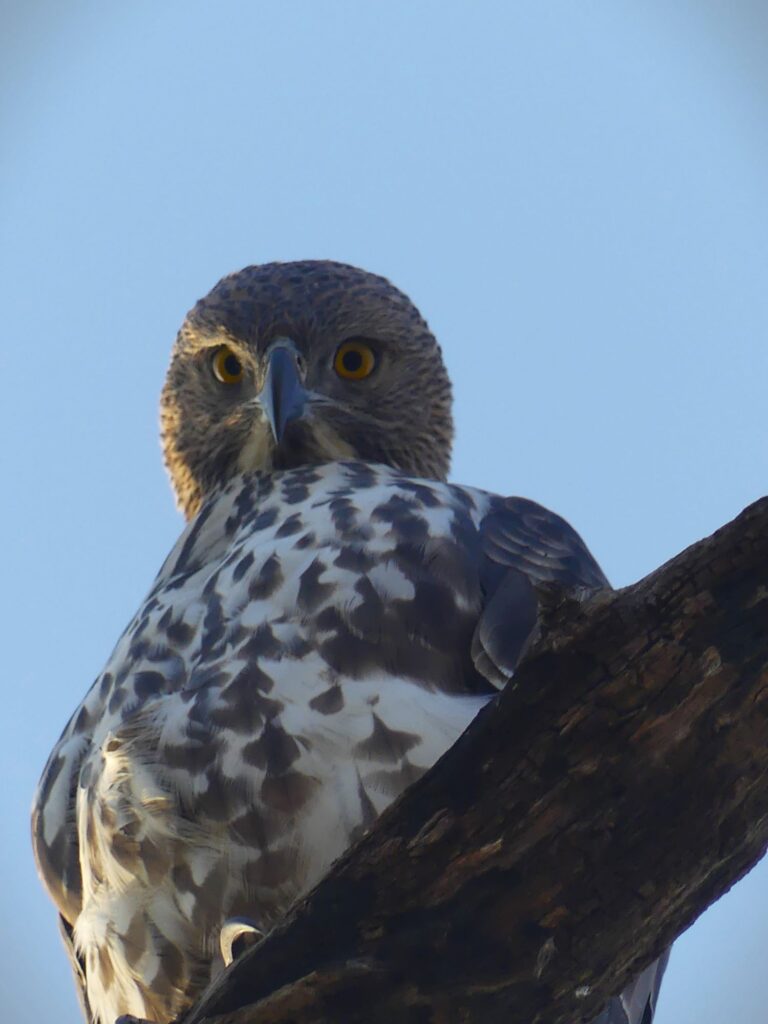
A SECRET WEAPON
Even a walk in the Thakurdwara village with Sushila could turn into a wildlife odyssey. Toward the end of my stay in Bardia, we took a casual walk through the patchwork of fields and smallholdings that make up the outskirts of the village.
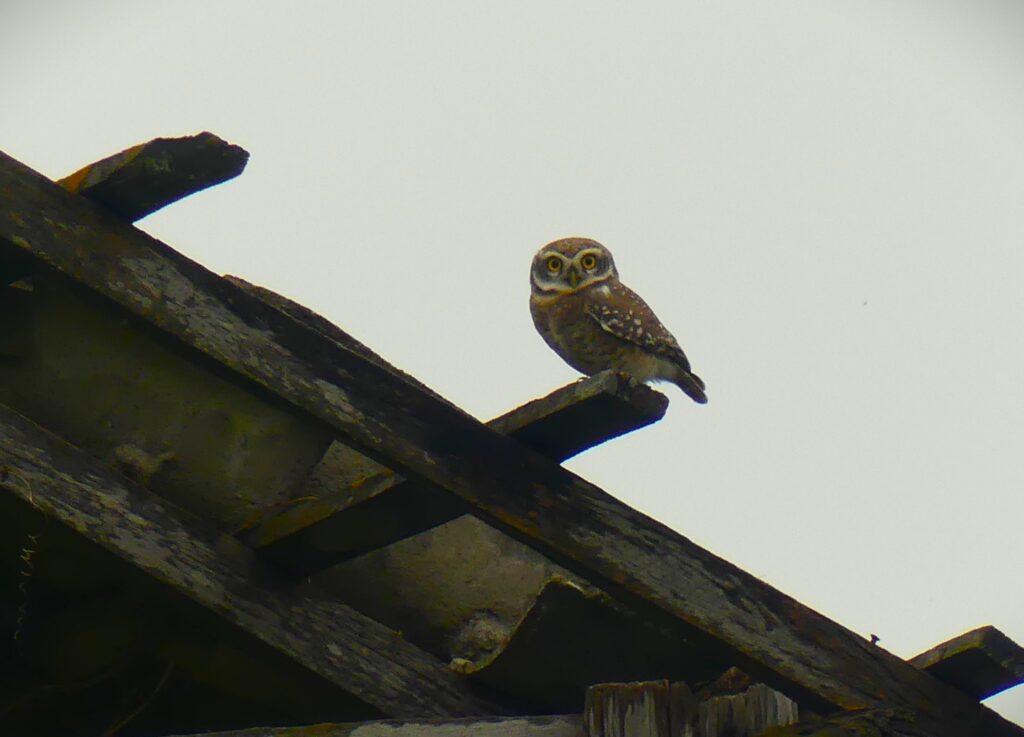
Sushila had been trying to track down a sighting of some of the region’s owls since I arrived, but until this point with little success. But this is a lady with a relentless determination and a local’s inside knowledge of the area’s wild residents. Walking past a small house, surrounded by bright yellow mustard fields, Sushila scrutinized the roof of a barn with binoculars. Nothing. Then she produced her secret weapon – her mobile phone. She played back the staccato shriek of the spotted owlet. Still Nothing. Then, one by one, a group of tiny, curious heads of an owlet family emerged, staring with wide, golden eyes, curious to view this intruder into their wild lives. Sushila: part guide, part owlet, 100% part of the forest and the environment of Bardia.
THE GREEN TOWER
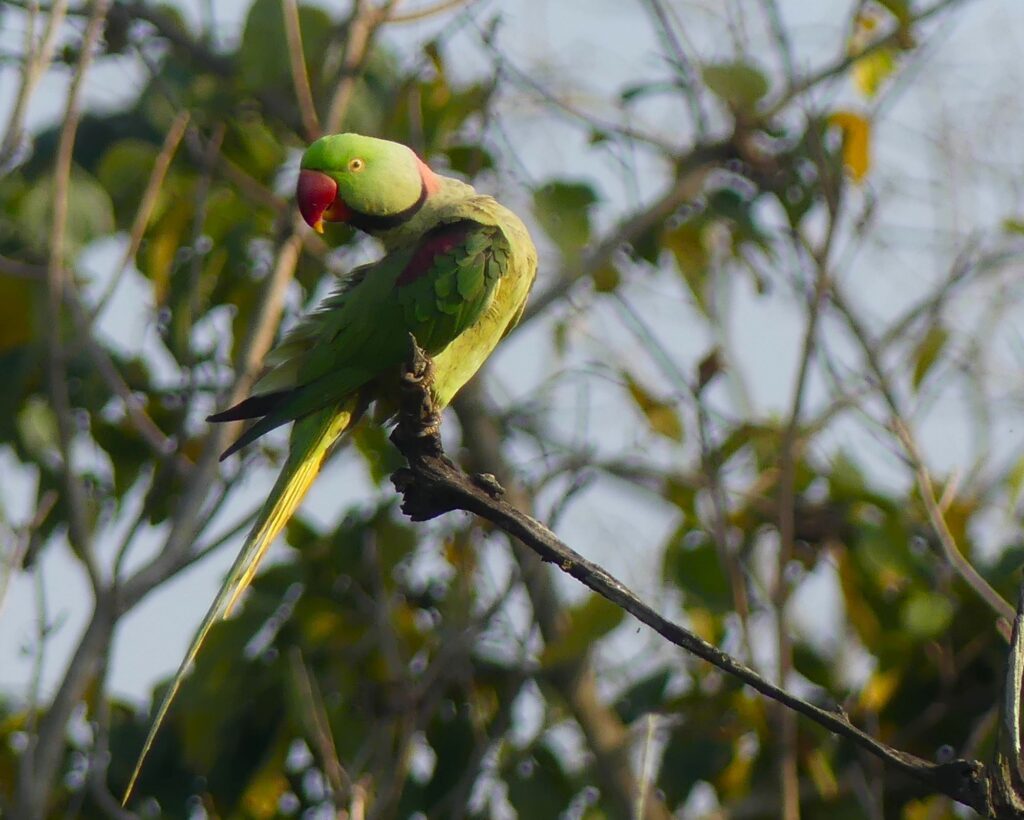
On a warm, sunny afternoon I followed Manju through the swaying grasslands of Bardia. We were heading to one of Bardia’s many wildlife watchtowers. This one was called The Green Tower. It overlooked a bend in the river and was set amongst a dense tangle of tall trees and luxuriant vegetation.
As we approached the tower, we spotted one of the park guards, gesturing excitedly. ‘Come on – let’s hurry!’ urged Manju. We leapt up the tower, reaching the top, panting and sweating, just in time to see the orange backside of a magnificent tigress disappear around the corner of the river. My first wild tiger sighting! A moment I had dreamed of since I was a little child! Already it was a magnificent day. I was elated. In the tower a couple of excited photographers and park guards explained the tigress had been hanging around for a while, acting strangely. The guards theorized that the tigress might have cubs nearby, and might be trying to protect them from a male in the area (male tigers will try and kill cubs that are not their own).
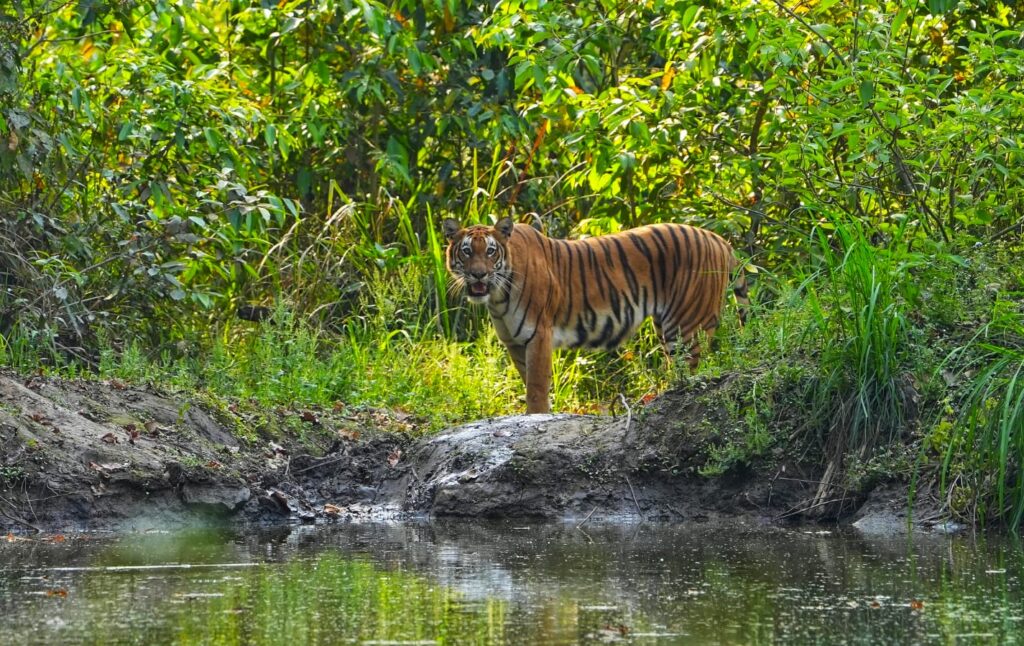
A SURPRISE
Perhaps that would be all we would see of this tigress? Regardless, we waited, hopeful of another glimpse. Half an hour passed, and then once more the tigress, a picture of feline elegance and power, stalked out into the river, tentatively approaching the left bank. Why the caution? With an earth-shaking roar, a huge male tiger burst out from the elephant grass and into the river, shocking not only the tigress, but also everybody in the tower. For a few seconds, everyone forgot to breathe!
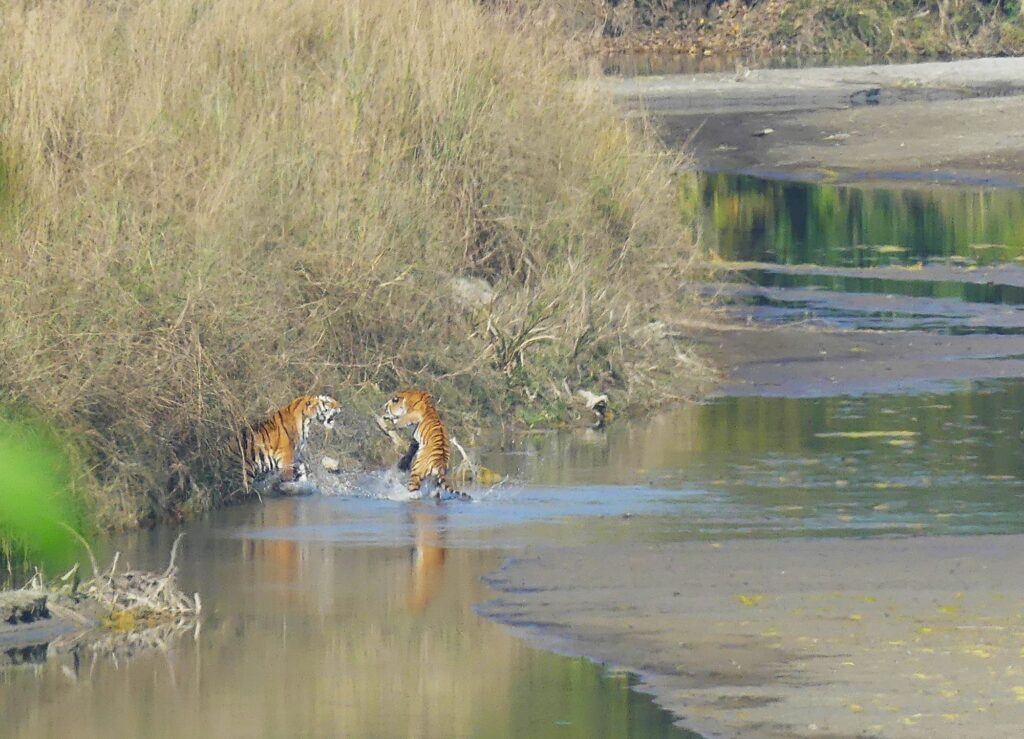
LOVE IS IN THE AIR
The tigers then circled each other cautiously in the shallow water of the river – would there be a battle? But the mood changed quickly. Obviously, something else was going on. Romance was in the air. After sizing each other up, they obviously liked what they saw, and the two tigers left the river behind, disappearing into the elephant grass on the left side for a bit of privacy. The occasional thundering roar told us that they were enjoying themselves. A tiger’s roar is so strong the air seems to pulse and vibrate. Another half an hour of fun and games later, the two tigers emerged languorously from the bush, taking a cool soak in the river. The tiger equivalent of a post-sex cigarette!
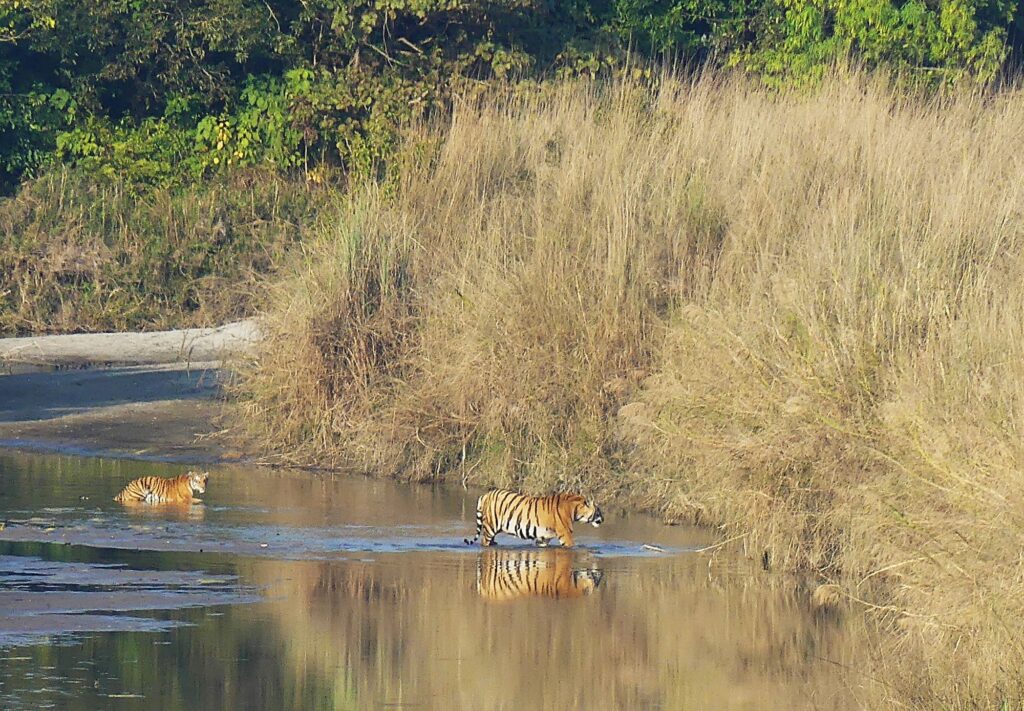
DOWN BY THE RIVER
On a high from such a remarkable sighting, we started to walk back, and Manju suggested we check the riverbank on the Western edge of the park. It was another great call. Sitting quietly by the river, we were once again rewarded, as a family of cavorting smooth-coated otters ran, swam, and fished their way up the river, passing only a few meters in front of us in the golden evening light. Otters are a delight to watch, every movement seems so full of joy, their voices high-pitched whistles and squeaks of delight. A fitting conclusion for a perfect day of wildlife watching.
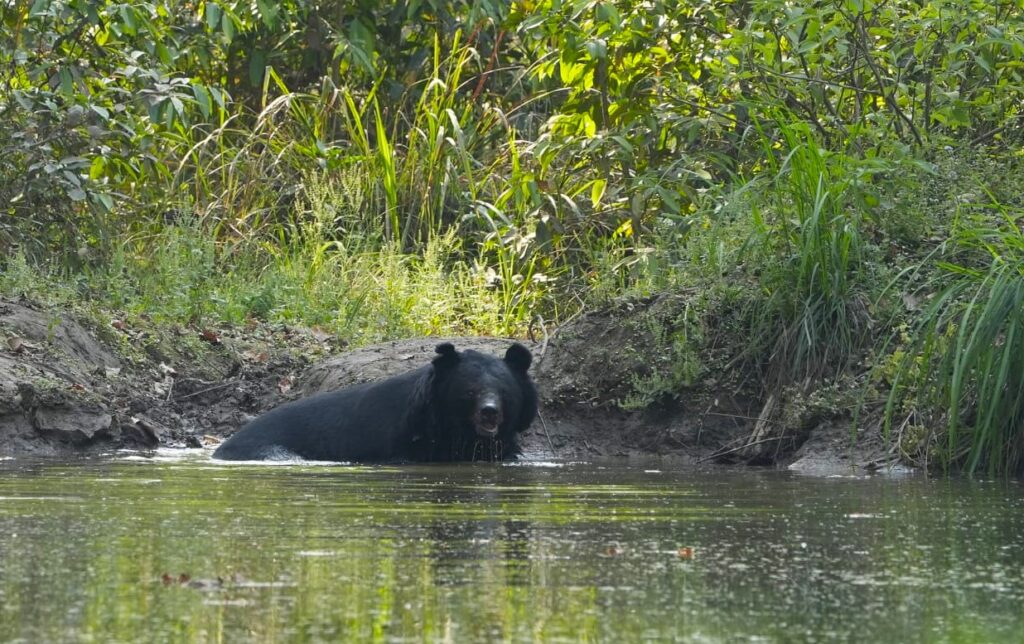
BARDIA’S JUNGLE QUEENS
Indeed, any day adventuring out into jungle with Sushila and Manju is a highly rewarding wildlife odyssey. In a part of the world where ladies’ lives are often seen as bound to the home and homemaking, Sushila and Manju should be seen as examples of how, with work and persistence, women can forge their own careers and successes, on their own terms. The sisters are an inspiration for young ladies growing up in the community. They are pioneers. Sushila and Manju Mahatara, Bardia’s Queens of the Jungle!
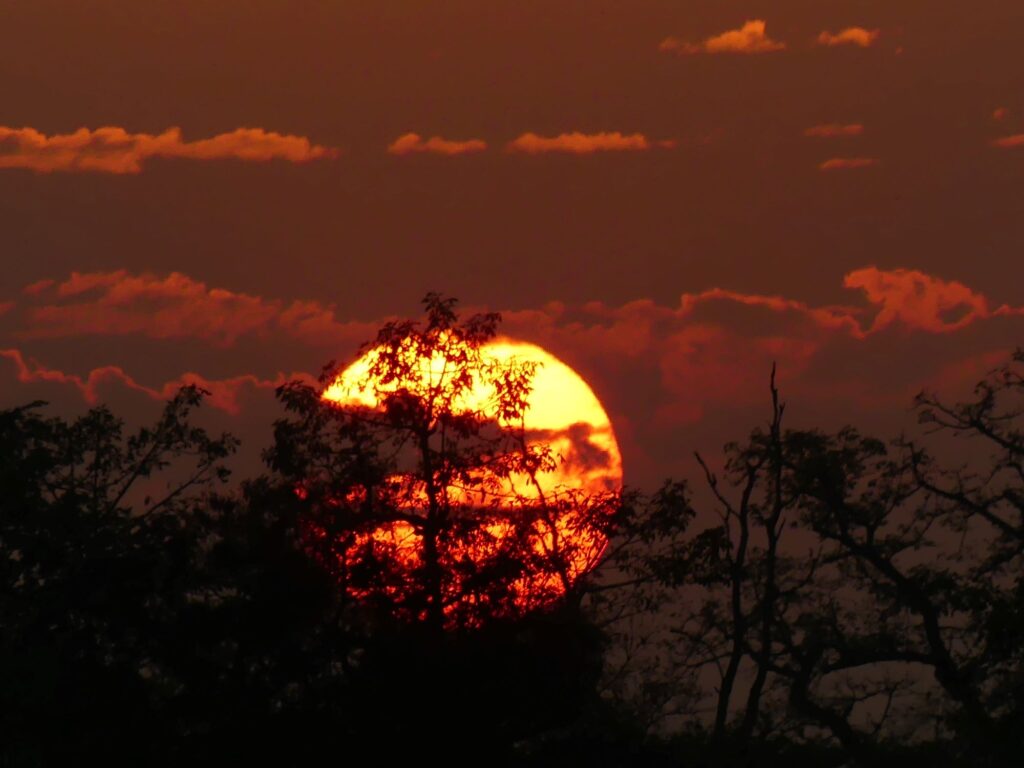
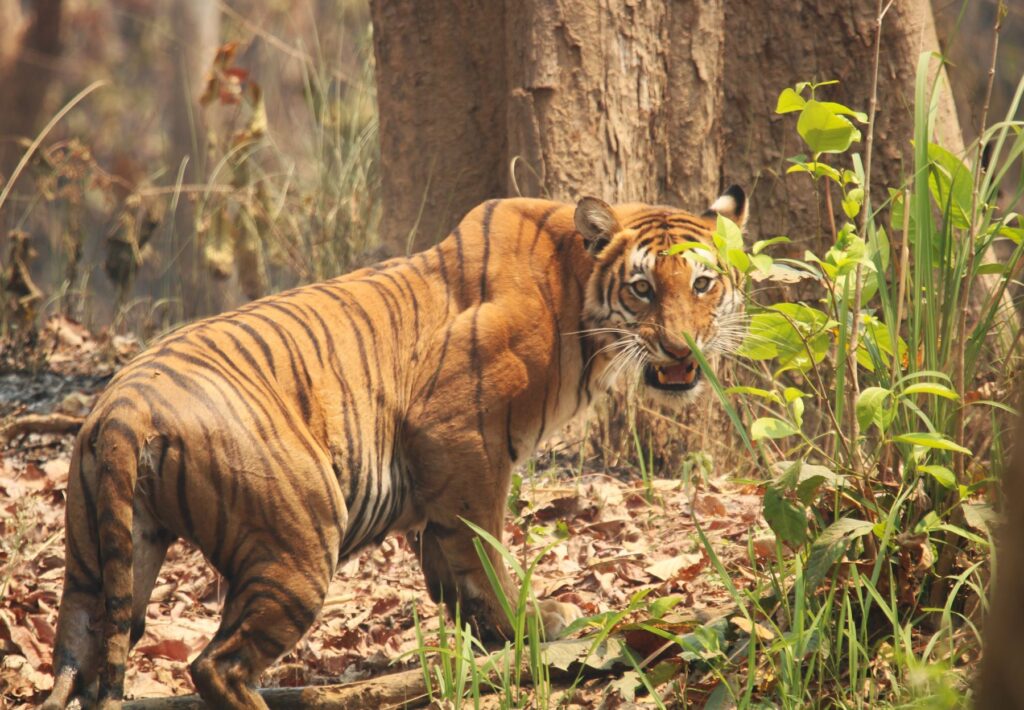
CONTACT INFORMATION:
Sushila and Manju work primarily for Burhan Wilderness Camp, but they are also available for independent guiding:
Contact Sushila Mahatara: email: sushilamahatara123@gmail.com or mobile: +977 9863151003
Contact Manju Mahatara: email: anjelmoha2052@gmail.com or mobile: + 977-9869452272
Contact Burhan Wilderness Camps here: Burhan Camps
TO LEARN MORE ABOUT CONSERVATION IN BARDIA NATIONAL PARK:
Bardia’s Community Conservation Heroes – The Lacandongringo
TO READ MORE CONSERVATION FOCUSED ARTICLES
The Lion’s roar – one night on the Serengeti – The Lacandongringo
Land of the Lynx: a weekend of hope and despair in Doñana – The Lacandongringo
Making YOUR difference – small steps towards a greener world – The Lacandongringo
Hope and devastation. A Story of Borneo’s Orangutans – The Lacandongringo
